Hutton’s Dairy
After enumerators completed their 1921 census, the Town of Lindsay had a population of 7,620. Increasing by 10 percent over the course of the decade, there came new demand for milk and creamery products in the town. Heeding the demand, many dairies began popping up in homes around Lindsay in the 1910s and 1920s. Opened in 1923 by Thomas Hutton on his farm on the east limits of Lindsay and in the Township of Ops, Thomas competed against dairies such as Norman Mark, Charles H. Lee, Peter Murtha, City Dairy operated by Walter McMullen, and extended family members such as Thomas J. Archer’s dairy located up the road from him. In fact, the newly created Highland’s Dairy entered the market when Mark’s and Lee’s dairies were boasting of 20 to 25 new customers every week. Even with this competition, Thomas Hutton managed to sustain his business for many decades.
Thomas Hutton’s Early Life
Thomas Hutton. ca. 1940s.
Thomas Hutton was born in the Township of Ops to Hannah Collins (1846-1908) of Ireland and John Hutton (1836-1879) of Scotland on September 15, 1873. He was born in the farmhouse on what was known as the “Patrick Murphy” farm, south of Elm Tree Corners. Though it is unknown when John moved the family to Elm Tree Corners, we know they lived there on June 29, 1879, when John died due to complications with tuberculous, leaving behind Hannah to raise their children. At the time of his father’s death, Thomas was only six years old. Rather than live the life of a typical child of going to school, playing with classmates, and potentially moving onto high school, his father’s death forced Thomas out of school after completing fourth grade to work the farm with his brother. He became a beacon in his community through politics, kindness, and his business acumen; a testament to Thomas’ smarts and perseverance to do good without a lot of formal education.
Thursa Hutton (nee Woolacott)
Thursa Hutton. ca. 1940s.
While Thomas was working the farm, in neighbouring hamlet of Glandine on the Ops and Mariposa boundary was Thursa Woolacott, daughter of John Woolacott, born on October 28, 1877. The families likely knew each other while living on farms down the road from one another. Thomas and Thursa met in early 1902 and were married by November 25 of that same year in Lindsay. They started their life together on a farm that was located across from Riverside Cemetery and where the current Lindsay Golf and Country Club is today. By 1920, after moving once after purchasing the farm across from the cemetery, Thomas and Thursa purchased the farm off Verulam Road (now Highway 36) on the eastern boundary of Lindsay from James Magee.
Hutton’s Dairy/Highland Dairy
As mentioned earlier, Highland Dairy or Hutton’s Dairy opened operations sometime in 1923 with a herd of cattle of 63. It would appear that the operation developed slowly over the course of the summer of 1923 and into 1924. In its infancy and under the business name of “Thomas Hutton & Sons,” after the spring thaw of 1924 and into May the dairy was advertising they had a limited quantity of pure milk and cream for sale. No doubt a labour of love between Thomas and his sons, it took some time for the business to become stable and progressive. Due to the dairy competition already in Lindsay, I would presume that building a customer base would be quite difficult at first. To further complicate things, Thomas had to deal with community chatter and rumours that the dairy was going under and the Huttons would have to close and sell their business. Defending these claims in the Lindsay Post on September 3, 1927, Thomas said these rumours are “absolutely false and [I have] no intention of discontinuing the milk business and customers will be looked after as usual.” Further to lament his intention of continuing his business, Thomas purchased a few more Jersey cows by September 27 to increase milk production and supply.
Thomas Hutton’s farm and dairy operation. On the south side of the house where the horse and dairy cart are seen is where the milk bottles would be returned to the dairy through the basement window of the house to be cleaned and refilled.
“The Big House” where the Hutton’s resided after purchasing the farm in 1920.
“The Big House” as the family would call Thomas and Thursa’s home was large – with wood finishings and bannisters – and it provided all the comfort for the family of eight children. With son Peter running the cattle and farming part of the operation, son Joe, and Thomas ran the dairy trade.
Like most dairies in Lindsay, aside from Lindsay Creamery Ltd., milk operations were typically located in the basement of the house. This is where the milk would be homogenized, pasteurized, bottled, capped, stored, and loaded for delivery.
“There was a big round table, well like a table, but it moved and there were things where you put the milk bottles in, and when you got it all filled with bottles, you put your foot on the lever and it brings it down and milk would all come down and into the bottles. Then you let it up and rolled it around and you pushed your foot again and it would cap them.” – Wylene Hutton Lucas, remembering the process of filling the bottles.
An early quart from Hutton’s Dairy with a green applied colour label. ca. 1930s.
This job would be performed by hired help as well as Joe’s wife on occasion, according to Wylene. Though not in a large industrialized factory or space, dairies at the time underwent monthly inspections by the local Lindsay Board of Health. “Everything had to be so clean. It had to be wipe washed all the time and really really clean” says Wylene. In the early years of the dairy operation, there would be ebbs and flows on the cleanliness and fat content in the dairy’s product. Government regulation mandated a butter fat content of 3.4 percent in milk and Hutton’s product fluctuated anywhere between 3.6 and 4.4 percent in the 1920s. By 1929, production processes and newly mandated pasteurization helped lower the bacteria and sediment in the milk.
“When you went down the stairs into the basement, you walked into along the walls rollers as you would see at the Beer Store today. They would roll the cans of milk that was freshly milked from the cows into the big vat to have it pasteurized etc…and also to separate the cream and all other mechanisms as well. Right next to it was the walk in cooler and that's where it was all stored” remembers Wylene. This cooler would have been roughly 15 x 10 feet or 150 square feet and stored all the milk that was ready for delivery. After delivery, bottles would be passed in crates through the window on the east side of the house to be cleaned. “The temperature of the water has to be so hot and it was all done right there on the farm. It went from the cows, into the house and into the bottle to the street” continued Wylene.
The Process of Pasteurization in the 1920s
The first pasteurization machine installed in Lindsay was at N. Mark’s dairy on 42 Wellington Street, Lindsay. Located in the basement, this early machine would be similar to one that would have been found at Hutton’s Dairy in the early years. January 1924.
When Thomas Hutton first opened the dairy, there was no pasteurization equipment. Lindsay nor Ontario had any laws on the books to mandate the practice, unlike Toronto which required it before any bottle of milk hit the streets. In its simplest form in the 1920s, pasteurization is the heating of the milk from 140 to 145 degrees Fahrenheit for about 30 minutes and then rapidly cooling to a very low temperature. This process kills all bacteria present in the milk. The bacteria often found could cause tuberculosis, sore throats, or diphtheria, among others. The Government of Ontario in 1929 mandated all milk be pasteurized.
The machinery includes a tank with rotating steam pipes to heat the milk, pumps to force milk after pasteurization through a cooler, and other pumps to force iced brine through the same cooler, as well as powerful electric motors, belts, shafting and other incidental machinery. Once the milk is properly chilled it is pumped into a sanitary bottling machine that fills the bottles exactly full and no more.
Eventually as Thomas began to age, rather than opening the farm in April of every year and being intimately involved in the business, Peter and Joe would run the show. Although his duties on the farm and dairy were cut, this never slowed down Thomas, as he would be out on the farm and in the barn with his cane checking things out and making sure everything was running smoothly. In later years of the operation, to financially better the business Peter and Joe would buy milk from other nearby farms rather than keep so many heads of cattle. One such farmer was Mr. Kran who they regularly bought milk from. The dairy also bought butter from the Omemee Creamery to sell to their customers in Lindsay.
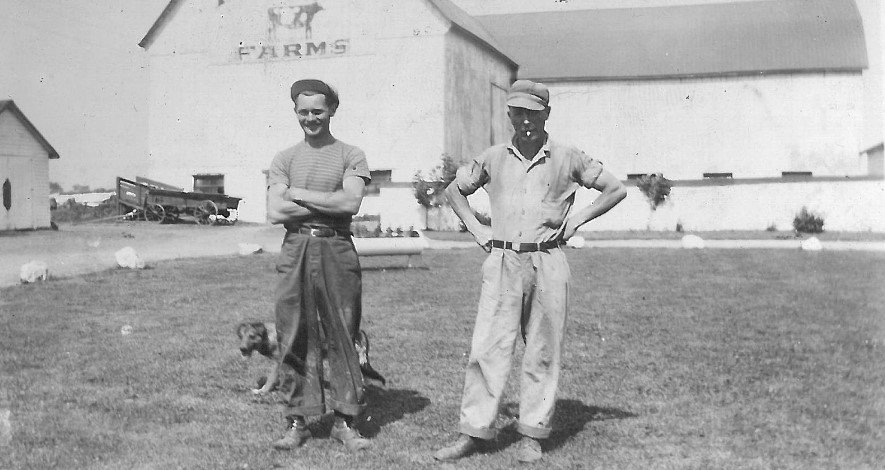
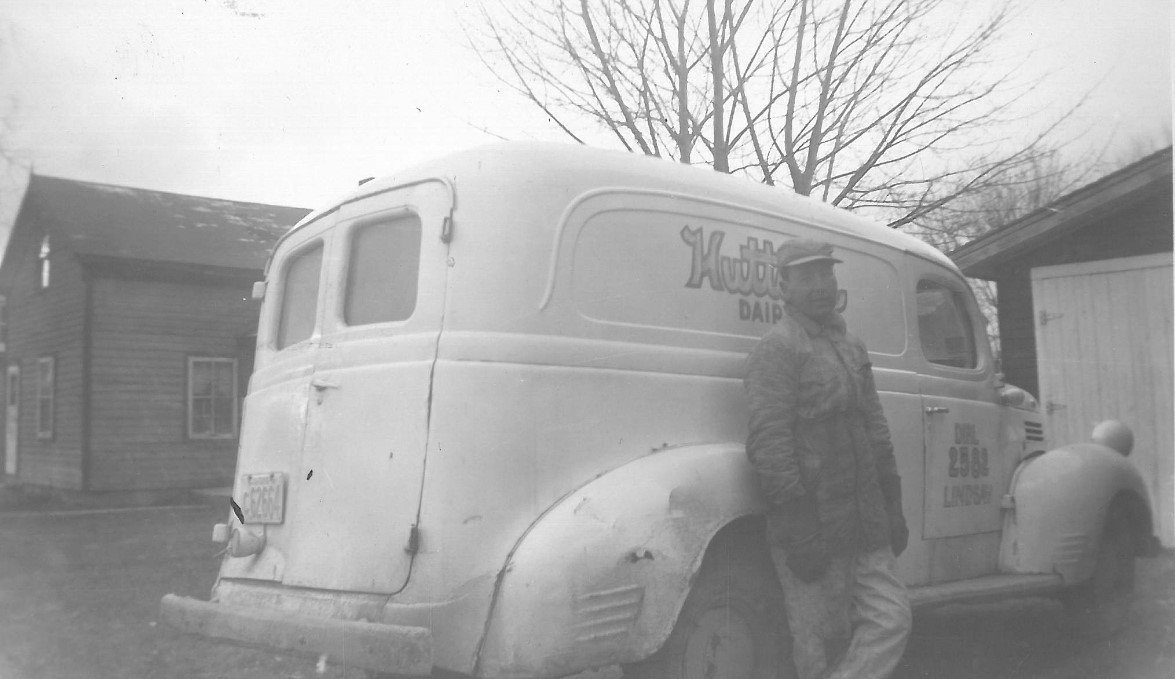
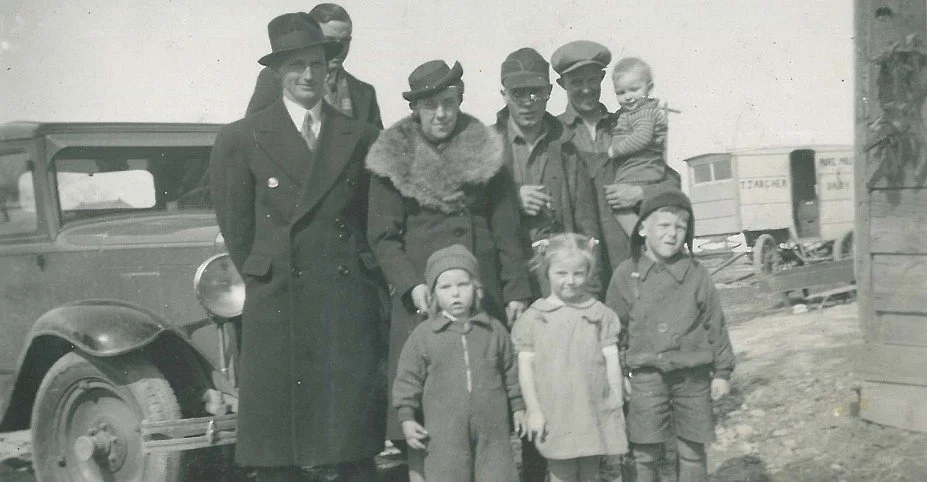
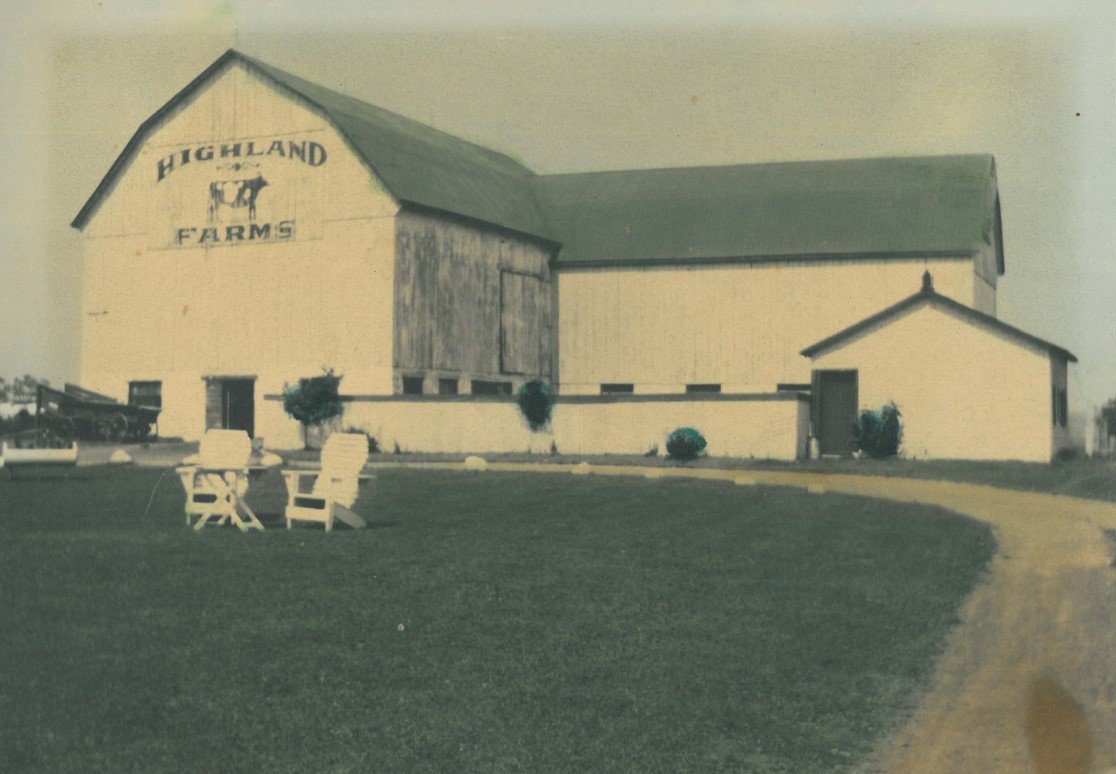
Hutton’s Dairy ran two delivery routes by the 1950s according to Mike Hutton, son of Joe. Starting at 6:00am, two delivery men would load up their cars to begin making their deliveries for the day. First route would cover the South and East wards of Lindsay and the second route would cover the North and West wards. At this time, there was Joe working in the basement at the dairy and two men making the deliveries, with Mike filling in during the summer time when the drivers took vacation. Thomas was known for his interactions with his customers and neighbours. He would come to be known around Ops and Lindsay as “Honest Tom” for his charitableness and kindness towards others. Wylene says that she’d “always say that I wish I had a nickel for every buck he loaned out that he never got back. He was just a kind honest man and a hard worker.” When people were down on their luck or if they had no money and had children, Thomas would leave milk on the front step for them. “It was nothing to wake up in the morning and go downstairs and there would be a stranger sleeping on the couch because their car broke down and he’d help them out and away they’d go” says Wylene.
Politics Runs in the Family
Along with his dairy business, Thomas was a councillor on the Ops Council for 20 years, being first elected in 1920 where he received 289 votes. Serving on and off until his retirement from municipal life in 1952, for four years between 1939 to 1942, he headed Ops Council as Reeve. Garnering much respect for his pragmatism when governing, Thomas became good friends with Leslie Frost, before and during his premiership.
Joesph Hutton, Oakah L. Jones (Consumer's Gas); R.C. Lamb; A. E. Hick (Mayor); J.C. Holtom; Herb Watson. Back row: Ada Grieves; B.C. Maidens. Councilors and Mayor with a Consumer’s Gas official at the beginning of the construction of Lindsay’s first gas line. 1957. (1979.8.1)
“I used to laugh because [Leslie Frost] was a Conservative and the Huttons were Liberals. I can remember when Les Frost was made Premier, he came to the house, maybe a week after or close to, he came and the two of them would sit and have a hot toddy and they talked politics. I would just shake my head because you know [Thomas] would just voice his opinion, but that was just the way he was with Les and that’s why there were friends. Les got both sides of the story this way” recalls Wylene.
A devoted family man that loved his wife, children, and grandchildren, Thomas Hutton died at 10:40pm on June 25, 1957, eight years after his wife, by which Thomas would say that his “life did not seem the same” after her passing. The dairy business had already been sold to Joseph who ran it for a few more years before selling to Silverwood's Dairy. Joesph would continue working for Silverwood’s for a short time, acting as a general buyer of milk and cream for the firm. Silverwood’s closed many small local dairies in the Province. For sheer scale of their operation, in Lindsay by 1960, Silverwood’s was producing over 7,000 quarts of milk per day, compared to the last standing small family dairy, McMullen’s, who was only producing around 600 quarts per day. Joseph would follow in his father’s footsteps becoming a Lindsay Councillor for many years.
Having been elected in the 1950s and described by Mike Hutton as a hard worker and a family man, politics definitely ran in the family. “Joe loved politics..they’d get into some mighty discussions” says Sharon Hutton. This love did not just end with municipal affairs and local issues. In 1958, Joe tried his hand in federal politics. Nominated by the Liberal Association of Victoria-Haliburton, Joe entered federal politics at a time when the Progressive Conservative Party had a popular and charismatic leader in John Diefenbaker.
“I will not be intimidated by any group or individual. I will play no favourites when it comes to looking after the interests of the riding if I am elected to office. I have always endeavoured to serve you, the electorate, to the best of my ability regardless of race or creed and I feel that you will take this into consideration when I appeal for your support in my efforts to serve you at a higher level” were the words spoken by Joe Hutton after his nomination. Starting his campaign in Beaverton, Hutton posed the question: “Where are the jobs you promised us John?”
Campaign ad issued by Joseph Hutton in the final days of the campaign before the March 31 election day.
The local Liberal campaign of 1958 focused on cutting personal taxes equating to $400 million a year and cuts to the excise tax on cars by 7.5 percent. The focus on tax cuts by Hutton was in response to a growing unemployment rate throughout Canada with a total of 1,068 women and men unemployed in Victoria County. Industrial plants were cutting jobs and most factories in Lindsay were not looking for any hired help leading up to the election. According to Hutton, “people of this riding were greatly dissatisfied with the serious unemployment situation, plus the rising cost of living and taxation” which he said was a reason why people were leaving the PC party and voting Liberal. Further, raising old age assistance, creating a “Sickness Insurance” plan, and implementing a family allowance paid to the family for every boy and girl under the age of 18 were all policies proposed by the Liberal campaign nationally and locally.
Unfortunately for Hutton and Liberals in Victoria-Haliburton, they lost in a landslide both nationally and locally. Incumbent Member of Parliament, Clayton Hodgson, was re-elected with 16,361 votes to Hutton’s 5,309 votes. Many in the Hutton campaign thought they could make some inroads with the electorate, whereas a prominent and veteran Progressive Conservative stalwart, Art Carew, predicted Hodgson would win by over 10,000 votes.
Joe would not try his hand in federal politics again, but continued serving his community on the Lindsay Council. Like his father, after retirement Joe still remained active in community affairs. He would pass away on May 31, 1979 at the age of 65.
Citizen of the Year Goes Too…
The spotlight didn’t just shine on one brother. After Thomas Hutton died, Peter, who worked the cattle farm and lived in the house across the street, worked in construction as well as a maintenance foreman for Emily Provincial Park in Omemee and as a painter in his own business. In his retirement which started around his 65th birthday, Peter took up volunteering at the Ross Memorial Hospital where he would spend five or six afternoons or evenings a week helping out around the hospital. His duties included picking up and delivering food trays, serving drinks, and holding conversation with patients to brighten up their day. Described by some as shy and self-described as a “common guy” and “back-row man,” when he was working at the hospital he was anything but. A nurse from the third floor of the Ross is quoted as saying "Peter was super. He always had time to sit and talk to patients which is something we don’t always have time for…There aren’t very many male volunteers like him.”
Always on the go and never one to sit down Peter wanted an active life after retirement. “I like helping people” Peter said, “and it’s helping me too.” When he would volunteer, Peter said he would “go into a room and someone will be down and I try to cheer them up. When I get a smile out of them before I leave the room it just makes my day. I’m very lucky to have this. I don’t want thanks or praise. I just do it to help them.”
Admitting that he had found his calling through his hospital work over the farming life with his father, his work in the community did not go unnoticed. Although he didn’t want praise, in 1983, Peter was was selected as Lindsay’s Citizen of The Year against over 250 other nominations and received an honourary plaque from Charlie Stoddart, the chairman of the committee. Peter was given a hand-written plaque as the award. His name was also inscribed on the Roll of Honour which was displayed at the Town Hall and in the Chamber of Commerce.
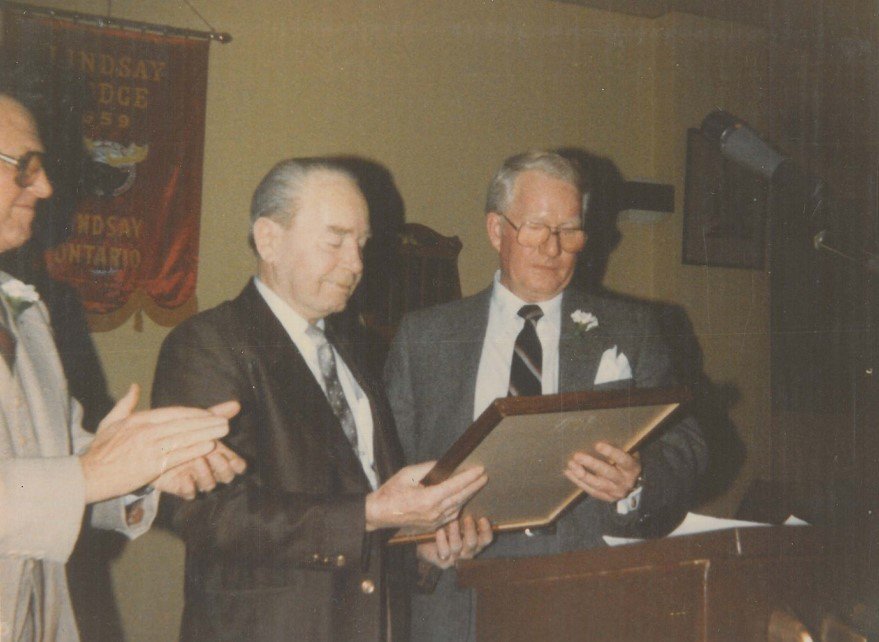
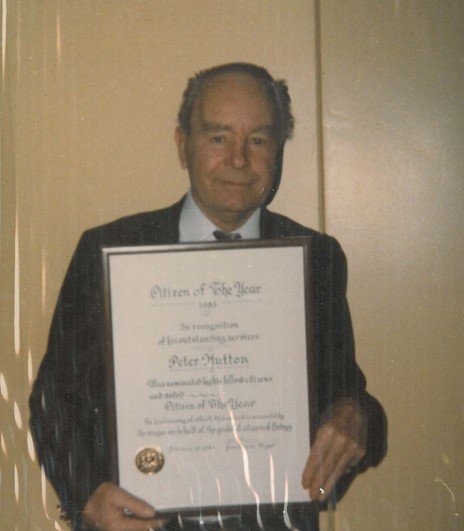
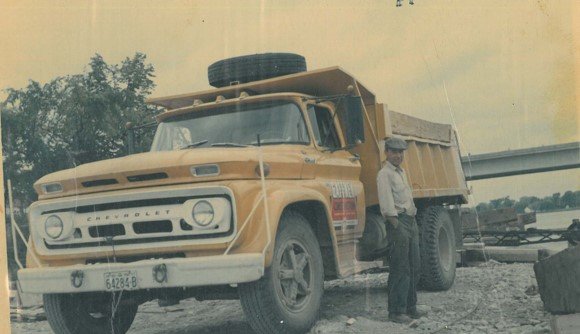
Peter Hutton would pass away a year later on May 5, 1984. Remembered by many as an “all-round super guy,” “a friend to everyone,” and someone who “always had a smile on his face even with his own health problems,” the lifelong Lindsay resident sure had a big impact on his community and peers, even though he did not like to admit it.
Acknowledgments
I want to thank the Hutton family for helping with this write up on their family’s history in Lindsay, especially Wylene Hutton Lucas, Lori Hutton, and Mike Hutton for their shared memories and photographs of the family.
Written by Zac Miller








